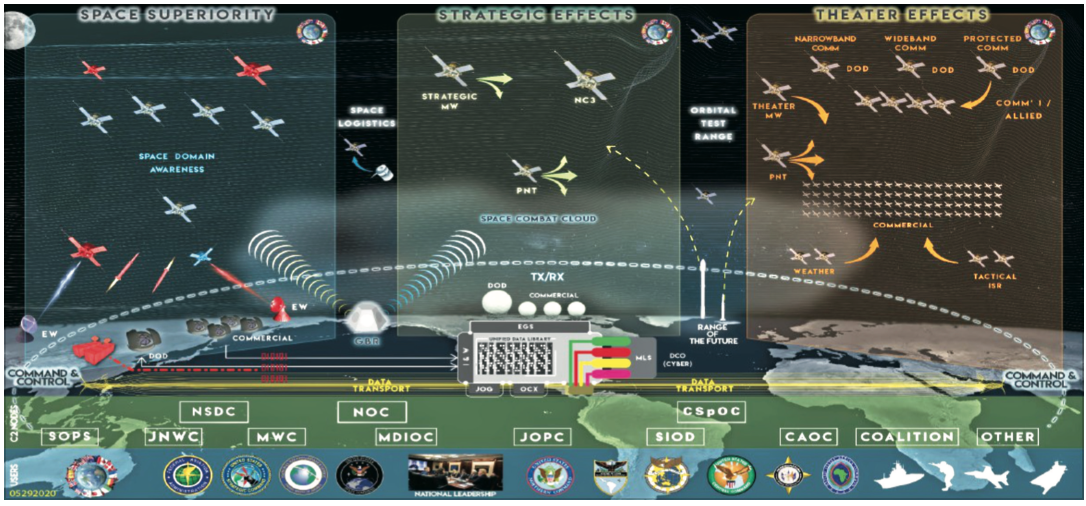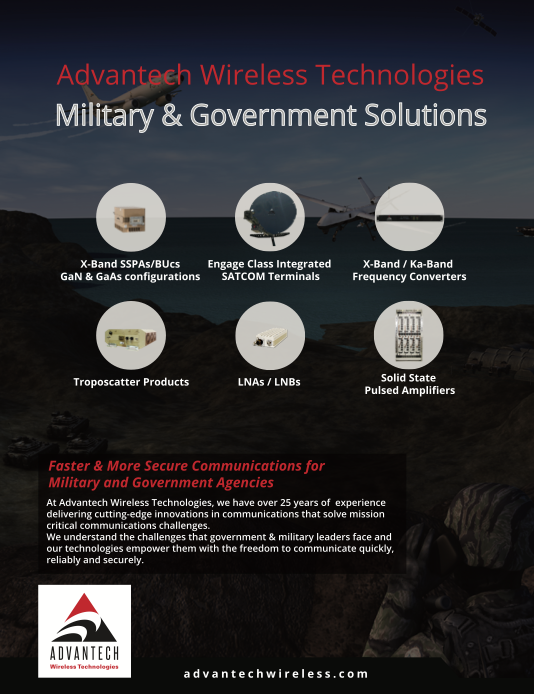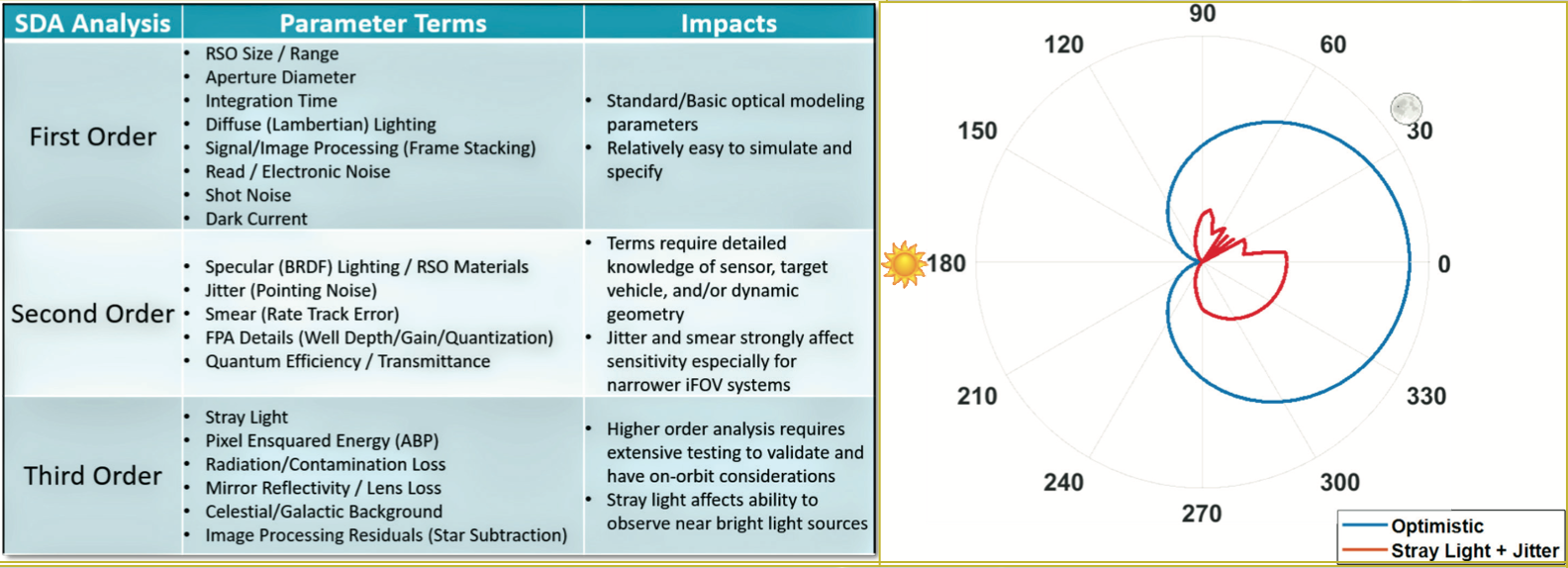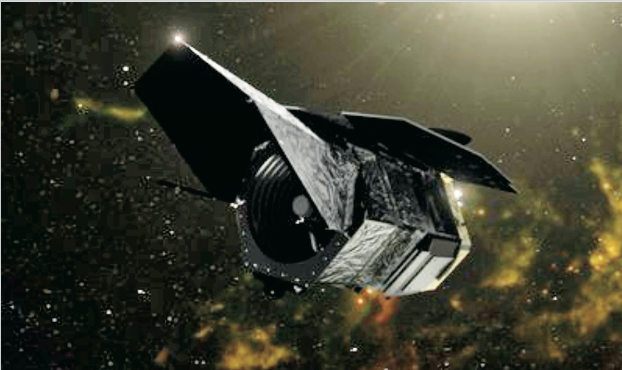During the last three years, the term and mission of “Space Situational Awareness” (SSA) was upgraded to become “Space Domain Awareness” (SDA) and the U.S. Space Force (USSF) was officially established.
This wasn’t simple rebranding. This marked a comprehensive change in our nation’s approach to managing and securing the increasingly congested and contested space domain. However, the evolution is far from complete. Continuing to improve, expand and advance SDA capabilities to be more threat aware and relevant can improve preparedness for critical space assets, in a battlespace environment.
 Infographic is courtesy of the USSF’s Space & Missile Systems Center.
Infographic is courtesy of the USSF’s Space & Missile Systems Center.
The conversion to SDA stemmed from the realization that awareness must be actor/intent-cognizant and timely — not only focusing on tracking space objects, but also a necessary element of Space Control to support the core USSF mission of Space Superiority. That means emphasizing characterization, timeliness, and proactive (in addition to reactive) strategies.
As with any evolution, there are challenges and growing pains to overcome, particularly in highly complex environments such as the space domain, where there are multiple agencies, companies, nations, and interests shaping the future. These entities must continue to work together and with industry partners to push capabilities beyond current levels.

The good news is that initiatives, investments, and doctrine are being regularly updated to acknowledge the increasing relevance of threat-based capabilities. But, because of the complexities in SDA in different domains (LEO and Deep Space) and the multiple entities working in this mission area, change can be slow. This makes industry partnerships even more vital and is a key reason we work as a mission partner with our government customers to be understand and support future activities.
As we work to achieve a future vision of a comprehensive and robust space superiority posture for the nation, leveraging a strong SDA foundation and priorities for the entire SDA community include increased investment to improve data sharing and mission management; achieve a deterrent presence; in mission-driven capabilities; and improving proactive characterization and anomaly detection.
Two specific high-priority areas that the SDA community can address in working toward a unified and shared common operating stance are: 1) committing to quality standards and parameters established through comprehensive performance modeling; and 2) observation timeliness and low-latency in all orbit domains, not just GEO and LEO.During the last three years, the term and mission of “Space Situational Awareness” (SSA) was upgraded to become “Space Domain Awareness” (SDA) and the U.S. Space Force (USSF) was officially established.

Figure 2: Higher-Order Space Domain Awareness Optical Modeling Effects are often omitted due to their complexities. However, such terms often present significant negative effects that can cripple mission performance. Red, higher-fidelity performance modeling shows significantly degraded performance in comparison to the first-order-only model, Blue.
Threat-Driven Missions Require High-Quality Solutions
As SDA broadens from simply knowing the location of space objects to a deeper understanding of what those objects are, who put them there and why, and the potential threat they pose to critical national assets and our nation’s security, the quality of data and the speed with which it is delivered become paramount.
The risk in any evolving system is that the desire to make strides quickly often corresponds with a desire to do it economically, often sacrificing rigorous modeling and analysis in the process. There are certainly solutions out there that offer low costs and speed – and these benefits are understandably tempting in a government ecosystem.

However, while these technologies and solutions might meet the minimum standards of quality and risk tolerance, the SDA community must commit to a standard of quality equal to the threat potential. There is little disagreement that space will be the next hotly contested domain and that space-based threats are among the most significant risks facing our national security going forward.
During a recent panel discussion hosted by the Armed Forces Communications and Electronics Association (AFCEA), as reported in the its publication, Signal, Sean Kirkpatrick, deputy director of Intelligence and Department of National Intelligence (DNI), U.S. Space Command (SPACECOM), commented on the potential threats coming from the estimated 70 nations operating in space, including China and Russia.
“Their weaponization of space, in the space domain, and to space from the ground, has really progressed significantly over the last 20 years. They have pursued nearly every type of counterspace weapon that you can think of and they have built them. They have tested them, and they are proliferating them in an operational environment. Everything from ground-based lasers to direct ascent anti-satellite systems, to on orbit weapons, jammers, you name it, and if you can think of it, they’ve done it. And the fact that they are pursuing that really points to their understanding of the United States’ reliance on space in our daily lives.”
The increasing significance of these threats should be reflected in our investment in SDA as well as deterrence and defense.
Optical systems represent just one area where investment is wise. The fact is, when you move observation out to space, there are special design and performance considerations beyond the basic target size, aperture diameter, focal length, integration time, etc. High-quality optical instruments, such as those built by Ball, are designed to manage higher order effects, such as specular lighting, host jitter, target smear, stray light, as well as radiation, contamination and transmittance loss, and ensure that on-orbit performance meets expectations.

Artistic rendition of NASA’s Nancy Grace Roman Space Telescope
is courtesy of NASA.
These effects are present in optical systems regardless of environment or mission, but in the signal-starved space environment, they can significantly and negatively affect data quality if not accounted for correctly. The need for high-fidelity performance modeling driving design and manufacturing choices becomes even more evident as the mission moves farther from Earth.
And moving SDA farther from Earth is exactly what will be necessary as our own missions, not to mention those of our adversaries, move beyond GEO and LEO.
XGEO Space Domain Awareness
While SDA has historically been practiced in the LEO to GEO domains, the growing quantity of missions and traffic to cislunar space drives the importance and need for above — GEO (XGEO) SDA.
As an example, NASA’s ARTEMIS and CLPS programs, and the future planned Chinese activities, will lead to numerous assets and rocket bodies launched into the Earth-moon gravitational corridor in the coming years. Cislunar SDA systems will be critical to protecting and maintaining operational confidence for safe transit.
XGEO distances are generally an order-of-magnitude beyond those typically implemented for GEO sensing, driving the need for high-performance, long-range optical systems. The same sensors that may be adequate for proliferated LEO satellite systems will be insufficient to monitor the vastness of XGEO space.
Of course, it is not just the optical system that becomes more challenging in XGEO ranges. Additional complexities stem from data management and networking. Our national security relies not only on getting quality data from these higher orbits but getting it quickly.
While budget concerns must always be considered, the USSF and SDA community at large can work together to ensure that we align resources with the vision of improving our ability to protect our space assets and national security. To that end, in addition to developing high-fidelity optical sensors and communications technologies, Ball works hand-in-hand with our customers to develop performance modeling solutions and simulations to ensure that these technologies meet or exceed mission requirements.
The nation is well-positioned to achieve robust Space Domain Awareness. The technologies and solutions needed to maintain comprehensive domain awareness already exist today. But only by working together, as a community of government and industry partners, to define desired capabilities, performance standards and investment priorities will we be able to execute the shared vision for this critical mission.
Christopher Grant is the Sr. Advanced Systems Manager responsible for Ball Aerospace’s Space Domain Awareness system and technology developments, within the National Defense portfolio. Chris joined Ball in 2016, leading planned and active Space Domain Awareness programs and efforts. Before joining Ball, he worked in the USAF (AFRL/RV and NRO/AS&T) and industry on various space control and domain awareness programs, including GSSAP and related missions.
Dr. Jacob Griesbach (PhD EE 2000, MSEE 1997, BSEE 1995, Univ. of Colorado at Boulder) has 20 years of experience supporting space protection and related efforts. Currently at Ball Aerospace, he leads technical execution and internal research and development teams to support future space protection concepts.
Ball Aerospace pioneers discoveries that enable their customers to perform beyond expectation and protect what matters most. The company creates innovative space solutions, enables more accurate weather forecasts, drives insightful observations of our planet, delivers actionable data and intelligence, and ensures those who defend our freedom go forward bravely and return home safely. For more information, visit www.ball.com/aerospace
Recently, Ball Aerospace, who partnered with NASA Goddard Space Flight Center, successfully completed the Critical Design Review (CDR) of the Wide Field Instrument (WFI), which will be the primary science instrument on NASA’s Nancy Grace Roman Space Telescope, formerly known as the Wide Field Infrared Survey Telescope (WFIRST).
Ball and NASA Goddard Space Flight Center are working in a close partnership to develop the WFI. Ball’s primary responsibility is the Opto-Mechanical Assembly, which includes the optical bench, thermal control system, precision mechanisms, optics, electronics, and the relative calibration system that provide the stable structural and thermal environment necessary for wide field, high-quality, infrared observations. Ball will integrate the Goddard-provided 302-megapixel focal plane subsystem into the instrument and host instrument level verification and environmental testing.
The Roman Space Telescope is designed to unravel the secrets of dark energy, search for and image exoplanets, and explore many topics in infrared astrophysics. While its 2.4m telescope is the same size as Hubble’s, the WFI enables a field of view 100 times greater than Hubble’s at the same resolution. Ball’s work with NASA on the Roman Space Telescope continues a relationship that spans nearly 60 years. Ball built seven science instruments for the Hubble Space Telescope, as well as the advanced optical technology and lightweight mirror system for the James Webb Space Telescope.

